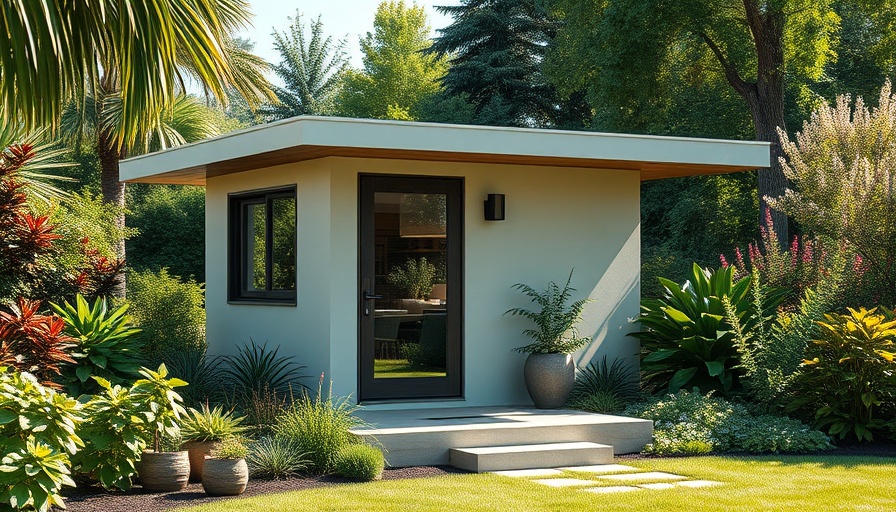
Unlocking the Potential of Accessory Dwelling Units
Are you considering expanding your living space or generating a secondary income stream? Accessory Dwelling Units (ADUs) could be the solution you've been searching for. As housing demands shift across the U.S., ADUs have emerged as a popular choice due to their flexibility, potential rental income, and contribution to sustainable living. The ADU market is on track to double over the next several years, indicating a strong desire for these unique housing solutions.
The Basics of ADUs: What You Need to Know
So, what exactly is an ADU? An accessory dwelling unit is a self-contained living space that shares a property with a primary home. They often resemble studio apartments and can include essential amenities such as kitchens and bathrooms. From separate freestanding units to converted garages and basements, there are various styles of ADUs to fit your needs and available space.
Pros and Cons of Building an ADU
Building an ADU comes with both benefits and challenges that homeowners should consider carefully. On the positive side, ADUs can create additional living space—a perfect solution for families with aging parents, adult children, or even guests. Not only do they offer the comfort of proximity, but they can also increase the value of your home significantly.
However, it’s essential to recognize the downsides as well. Though they can be a great investment, the upkeep, required renovations, and potential increase in property taxes can accumulate costs. Additionally, an ADU may take away usable backyard space or alter the dynamics of your property.
Exploring Different Types of ADUs
When considering an ADU, customization is key. Here are some popular types:
- Attached ADUs: These units share walls with the main home and maintain access to the existing utility systems, usually making them more affordable to build compared to detached options.
- Detached ADUs: Also known as backyard cottages, these units offer maximum privacy but entail higher construction costs due to the need for separate utility connections.
- Garage Conversions: Transforming an underused garage into an ADU is a budget-friendly option, although it may require significant renovations to comply with current building codes.
- Basement Suites: Making use of existing space can be lucrative; however, health and safety code upgrades will often be necessary for this option.
- Above Garage Units: These vertical solutions optimize space, offering privacy without sacrificing yard square footage.
Regulations and Planning: What You Should Know
Before diving into construction, it’s vital to understand local regulations surrounding ADUs. Zoning laws can vary widely by area, dictating what modifications are permissible. Some regions have restrictions on the size of ADUs, while others may focus on the requirement for additional parking spaces or citings. Stay informed about these regulations to avoid unexpected delays or expenditures.
Future Trends in ADU Development
As sustainability becomes a priority in the housing sector, ADUs are likely to play an essential role in evolving urban planning and design. By incorporating energy-efficient technologies and sustainable materials, new ADUs can contribute to environmental conservation. With their capacity to alleviate housing shortages and promote affordable living options, they stand as a beacon for future housing trends.
Ultimately, deciding to build an ADU can be a rewarding endeavor if approached with careful planning, consideration of local laws, and an understanding of the benefits and challenges they pose. Whether you seek to create a space for family or generate rental income, ADUs present a versatile and valuable housing solution.
In closing, if you're intrigued by the idea of building an ADU, it might be the perfect opportunity to enhance your property while also contributing to the broader narrative of affordable and sustainable living. Embrace this trend and explore how an ADU can work for you.



Write A Comment